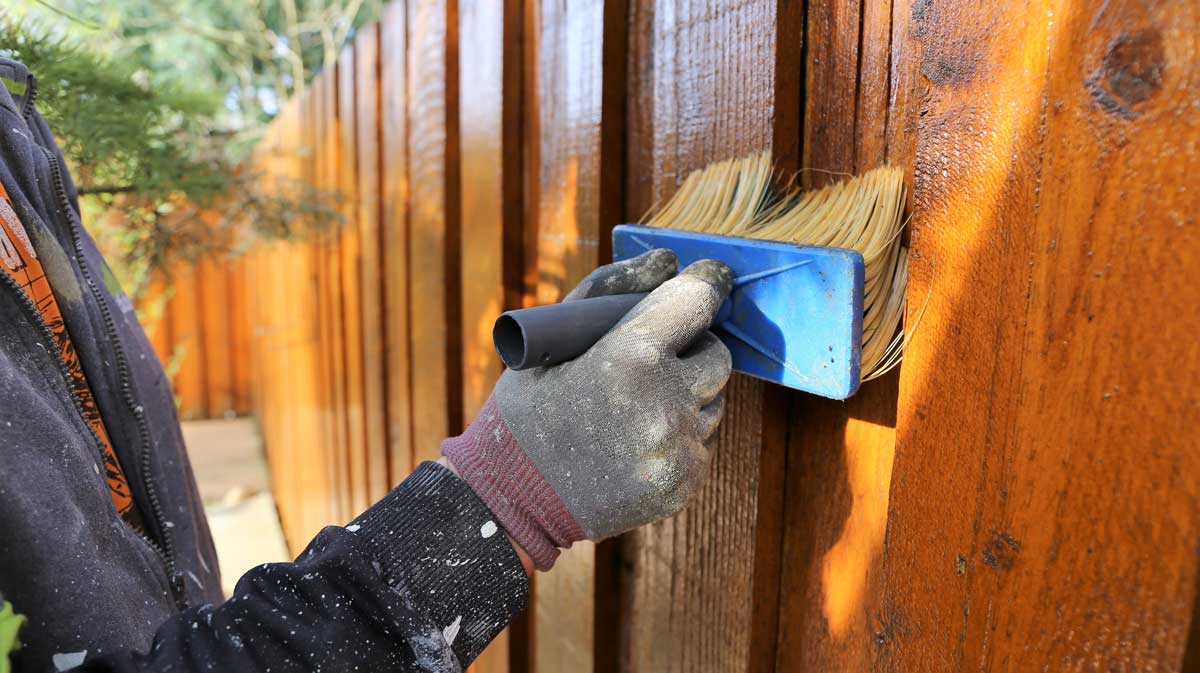How to Select the Right Fencing Discoloration for Your Property
When it involves boosting the look and sturdiness of your home's fencing, choosing the ideal stain is a crucial choice that needs cautious factor to consider. With a myriad of choices available on the market, each catering to different timber types, colors, and openness levels, the process can rapidly become overwhelming. Making an enlightened option can considerably influence the overall looks and longevity of your fencing. So, how can you make sure that you choose the perfect fencing tarnish that straightens with your residential or commercial property's style and upkeep demands? Let's discover some key factors to direct you in this decision-making process.
Comprehending Timber Kind
To pick the suitable fencing tarnish, it is vital to have a thorough understanding of the different sorts of wood generally made use of for secure fencing. The selection of timber plays an important function in determining the long life and overall visual appeals of the fence. Cedar is a popular option due to its all-natural resistance to degeneration and pests, making it a sturdy alternative for exterior structures. Pine is one more usual timber made use of in fence, known for its cost and ease of discoloration. Pine is a lot more prone to warping and deteriorating compared to cedar. Redwood is a high-end alternative known for its striking appearance and all-natural durability, though it features a greater price tag. When choosing a fencing stain, it is essential to consider the kind of wood being utilized to make certain compatibility and optimal protection. Understanding the features of different wood types will assist you make an informed choice when it comes to selecting the ideal fencing tarnish for your building - Fence Staining Nashville TN.
Selecting the Right Color
Choosing an appropriate color for your fencing stain is an essential choice that dramatically impacts the general visual appeal of your home. Lighter shades such as whites or light grays can make a fencing appear larger and add a touch of sophistication to your home. Inevitably, the appropriate color option will certainly boost the beauty of your fence and boost the total aesthetic allure of your home.

Thinking About Openness Degrees
When picking the ideal color for your fencing tarnish, an additional essential facet to take into consideration is the degree of openness that will certainly ideal match your property's visual and maintenance demands. Openness levels in fence discolorations usually fall under 3 classifications: transparent, semi-transparent, and solid. Transparent discolorations enable the natural appeal of the wood to reveal with while offering very little security versus the aspects. They are suitable for new or properly maintained fences where showcasing the wood grain is a top priority. Semi-transparent spots supply an equilibrium between shade enhancement and protection, enabling some timber grain to be visible while providing modest protecting from UV rays and moisture. Strong spots, on the other hand, offer one of the most security as they entirely cover the wood with a nontransparent coating. These appropriate for older fences or those in requirement of substantial protection or shade modification. Think about the degree of exposure your fence deals with, the desired upkeep regularity, and the aesthetic you want to attain when choosing the best transparency degree for your fencing tarnish.
Assessing Maintenance Demands
Considering the longevity and upkeep of your fence, reviewing the upkeep requirements is important in establishing one of the most ideal fencing tarnish for your home. The level of maintenance required for your fence can differ relying on aspects such as the kind of wood, climate condition in your area, and your personal choices.
When evaluating maintenance requirements, it is necessary to take into consideration the resilience of the fencing stain. Some stains call for even more regular reapplication than others, so picking a tarnish with a much longer life expectancy can help decrease the general maintenance needs of your fencing (Fence Staining Service). Additionally, aspects such as resistance to UV rays, water, and mold can impact just how frequently you need to re-stain your fencing

Examining Examples Before Application
Prior to applying any kind of fence tarnish, it is advisable to perform example tests to guarantee compatibility with the timber and wanted aesthetic outcome. Examining samples permits you to evaluate exactly how the tarnish will interact with the certain type of timber utilized in your fencing, as different woods can absorb discolorations in a different way. To start, choose a tiny inconspicuous area of the fencing to apply the stain samples.
Conclusion
In conclusion, selecting the proper fencing stain for your residential or commercial property involves recognizing the wood type, picking the ideal color, taking into consideration transparency levels, evaluating upkeep demands, and screening samples before application (Fence Staining Service). By taking these factors right into consideration, you can make sure that your fencing stain matches your residential or commercial property while giving the essential security and longevity. Make a notified choice to enhance the appearance and durability of your fence